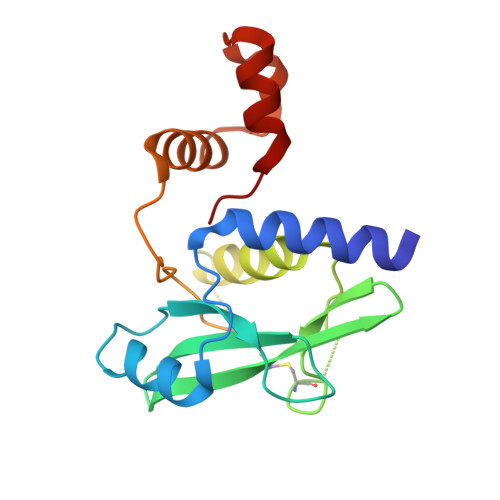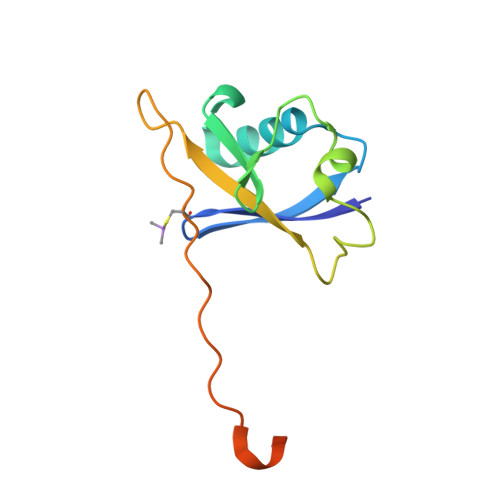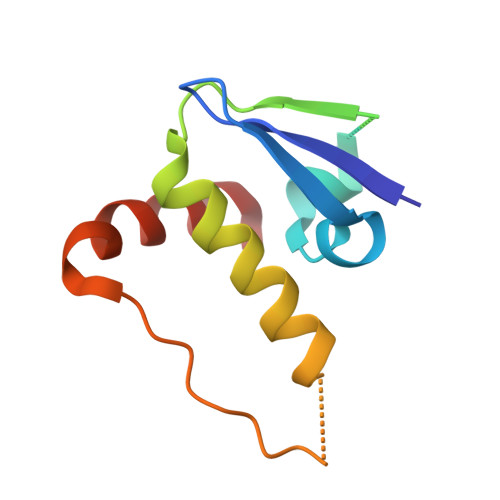Discovery of an exosite on the SOCS2-SH2 domain that enhances SH2 binding to phosphorylated ligands.
Linossi, E.M., Li, K., Veggiani, G., Tan, C., Dehkhoda, F., Hockings, C., Calleja, D.J., Keating, N., Feltham, R., Brooks, A.J., Li, S.S., Sidhu, S.S., Babon, J.J., Kershaw, N.J., Nicholson, S.E.(2021) Nat Commun 12: 7032-7032
- PubMed: 34857742
- DOI: https://doi.org/10.1038/s41467-021-26983-5
- Primary Citation of Related Structures:
7M6T - PubMed Abstract:
Suppressor of cytokine signaling (SOCS)2 protein is a key negative regulator of the growth hormone (GH) and Janus kinase (JAK)-Signal Transducers and Activators of Transcription (STAT) signaling cascade. The central SOCS2-Src homology 2 (SH2) domain is characteristic of the SOCS family proteins and is an important module that facilitates recognition of targets bearing phosphorylated tyrosine (pTyr) residues. Here we identify an exosite on the SOCS2-SH2 domain which, when bound to a non-phosphorylated peptide (F3), enhances SH2 affinity for canonical phosphorylated ligands. Solution of the SOCS2/F3 crystal structure reveals F3 as an α-helix which binds on the opposite side of the SH2 domain to the phosphopeptide binding site. F3:exosite binding appears to stabilise the SOCS2-SH2 domain, resulting in slower dissociation of phosphorylated ligands and consequently, enhances binding affinity. This biophysical enhancement of SH2:pTyr binding affinity translates to increase SOCS2 inhibition of GH signaling.
Organizational Affiliation:
The Walter and Eliza Hall Institute of Medical Research, Parkville, VIC, Australia.



















